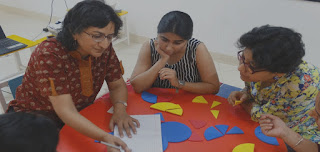Reflect on Dewey's (1938)
As I was reading the text, I recalled all the different types of schools that I have worked in over the years. From traditional to completely progressive. And I was disillusioned from all for as (Dewey, 2000) saw decades ago, each was encased in a dogmatic mould of its own. I have gone through ‘traditional education’ to ‘free progress education’ to ‘international education’ and also ‘spiritual education’! Each defined itself as a reaction to others. I am astounded by the clarity of thought in John Dewey’s words and that fact that he saw this happening decades before. His thought is still prevalent. My understanding of educative and mis-educative is that educative would be a way of educating that has a long-term perspective. Education here would be a space to learn skills and attitudes that stand the test of time. Mis-educative would be where the focus is immediate, such as an exam. I’d like to illustrate through my milieu: Maths education in India. In teaching of Mathematics, in ...




